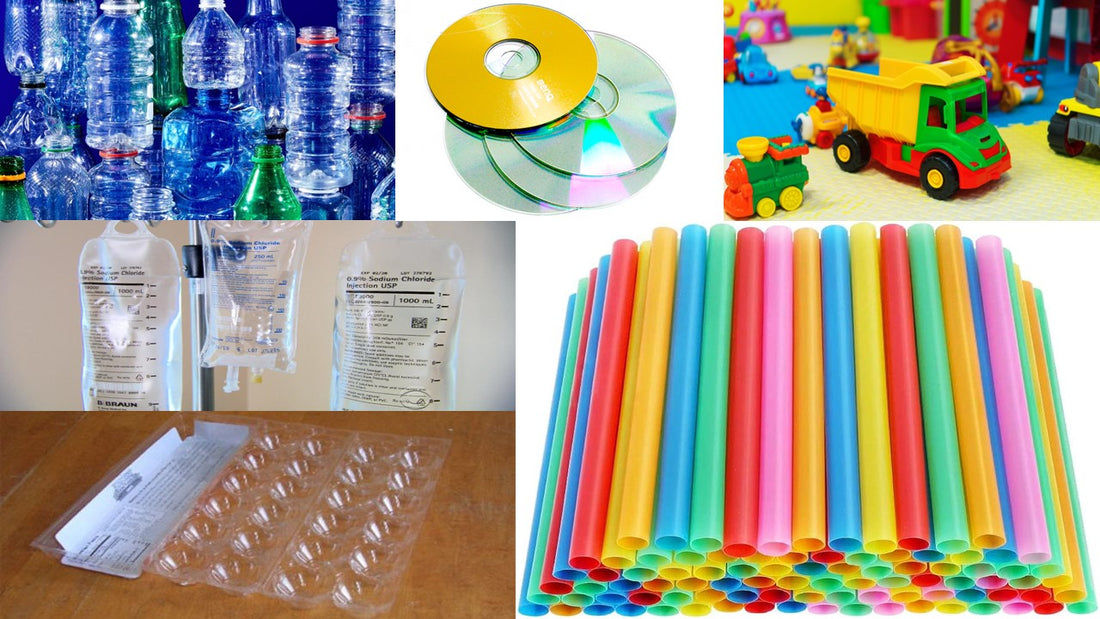1) Polyethylene Terephthalate (PET or PETE)
Is the most commonly used plastic. It is lightweight, strong, transparent and is used in food packaging and polyester fabrics.
Examples: Beverage bottles, Food bottles/jars and polyester clothing or rope.
2) High-Density Polyethylene (HDPE)
Polyethylene is classified into three types: High-Density, Low-Density and Linear Low-Density. High-Density Polyethylene is strong and resistant to moisture and chemicals, which makes it perfect for cartons, containers, pipes and other building materials.
Examples: Milk cartons, detergent bottles, cereal box liners, toys, buckets, park benches and rigid pipes.
3) Polyvinyl Chloride (PVC or Vinyl)
This hard and rigid plastic is resistant to chemicals and weathering, so it is used as building and construction material. It doesn’t conduct electricity, so it is used for high-tech applications such as wires and cables. It is also used in medical applications as it is impermeable to germs and can be easily disinfected, hence reducing infections in healthcare. At the same time, PVC is the most dangerous plastic to human health, as it leaks dangerous toxins (eg: lead, dioxins, vinyl chloride).
Examples: Plumbing pipes, credit cards, toys, teething rings, IV fluid bags, medical tubing and oxygen masks.
4) Low-Density Polyethylene (LDPE)
This is a softer, clearer and more flexible version of HDPE. It’s often used as a liner inside beverage cartons and in corrosion-resistant work surfaces and other products.
Examples: Cling wrap, sandwich and bread bags, bubble wrap, garbage bags, grocery bags and beverage cups.
5) Polypropylene (PP)
It is a highly durable and heat resistant, which makes it perfect for food packaging and food storage to hold hot items or be heated itself. It is flexible enough to allow for mild bending, but it retains its shape and strength for a long time.
Examples: Straws, bottle caps, prescription bottles, hot food containers, packaging tape, disposable diapers and DVD/CD boxes.
6) Polystyrene (PS or Styrofoam)
Also called Styrofoam, this low cost rigid plastic insulates very well, hence it used a lot in the food, packaging and construction industries. Like PVC, this is a dangerous plastic. It can easily leak harmful toxins such as styrene (a neurotoxin). This is then easily absorbed by food and hence ingested by humans.
Examples: Cups, takeout food containers, shipping and product packaging, egg cartons, cutlery and building insulation.
7) Other
This category is for all other types of plastic that don’t belong in any of the other six categories or are combinations of multiple types. We include it because you might occasionally come across the #7 recycling code, so it’s important to know what it means. The most important thing here is that these plastics aren’t typically recyclable.
Examples: Eyeglasses, baby and sports bottles, electronics, CD/DVDs, lighting fixtures and clear plastic cutlery.
